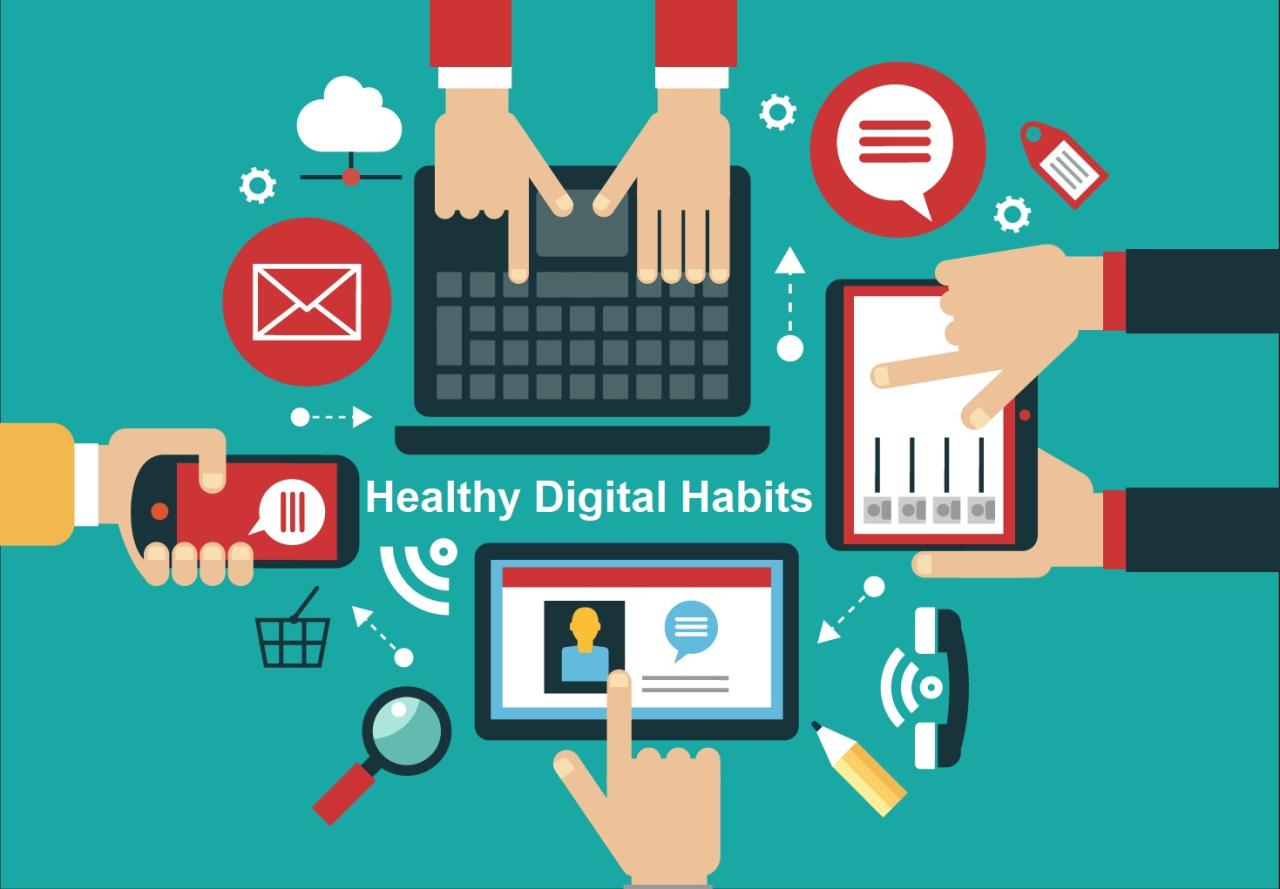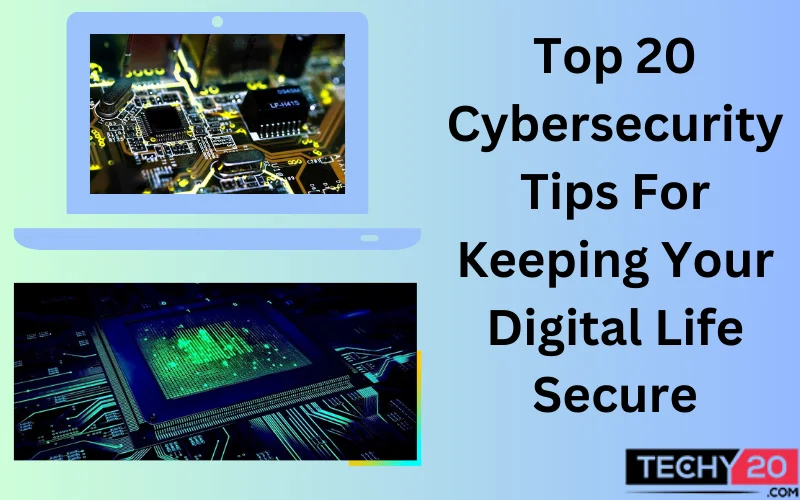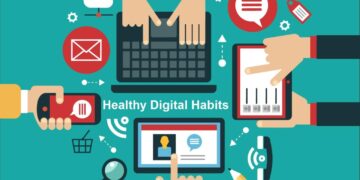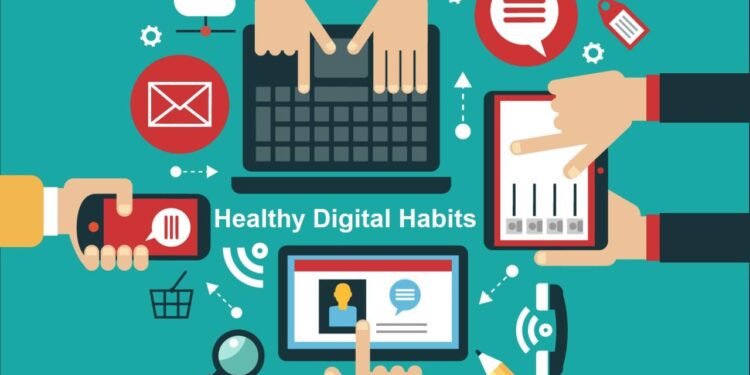Top cybersecurity habits for digital lifestyle lay the foundation for a secure online experience, essential in today's digital age. By adopting these practices, individuals can protect themselves from a myriad of cyber threats and safeguard their sensitive information.
As we delve deeper into the realm of cybersecurity habits, we uncover the key strategies and best practices that can fortify our digital defenses and ensure a safer online environment for all users.
Importance of Cybersecurity Habits

In today's digital age, cybersecurity habits are essential for maintaining a secure online presence. By following good cybersecurity practices, individuals can protect their personal information, financial assets, and sensitive data from cyber threats.
Risks of Not Practicing Good Cybersecurity Habits
Neglecting cybersecurity measures can expose individuals to various risks and vulnerabilities, including:
- Identity theft: Hackers can steal personal information such as social security numbers, credit card details, and passwords, leading to identity theft.
- Financial loss: Cybercriminals can access bank accounts, make unauthorized transactions, and steal money from individuals.
- Data breaches: Failure to secure sensitive data can result in data breaches, compromising confidential information and damaging reputations.
- Ransomware attacks: Malicious software can encrypt files on a device, demanding payment for decryption, causing financial loss and disruption of operations.
Creating Strong Passwords
In today's digital age, the importance of using strong and unique passwords cannot be overstated. With cyber threats on the rise, having secure passwords is crucial to protecting your personal information and online accounts from unauthorized access.
The Importance of Strong Passwords
When creating passwords for different accounts, it is essential to make them as strong and unique as possible. A strong password typically consists of a combination of letters (both uppercase and lowercase), numbers, and special characters. Avoid using easily guessable information such as birthdays, names, or common words.
By using strong passwords, you increase the difficulty for hackers to crack them and gain access to your accounts.
Tips for Creating Secure Passwords
- Use a mix of uppercase and lowercase letters, numbers, and special characters.
- Avoid using easily guessable information such as birthdays, names, or common words.
- Consider creating passphrases by combining multiple words to make them easier to remember but harder to crack.
- Use different passwords for each of your accounts to prevent a single breach from compromising all your accounts.
- Regularly update your passwords and enable two-factor authentication for an extra layer of security.
Password Managers vs. Manual Password Management
When it comes to managing multiple passwords, some people prefer using password managers while others opt for manual management. Password managers offer the convenience of storing and auto-filling passwords across different platforms, making it easier to maintain strong and unique passwords for each account.
On the other hand, manual password management requires users to remember and input passwords themselves, which can be more challenging and prone to human error.In conclusion, creating strong passwords is a fundamental step in enhancing your cybersecurity posture. By following best practices for password creation and management, you can significantly reduce the risk of falling victim to cyber threats and safeguard your digital identity.
Stay vigilant and prioritize security in all your online activities.
Multi-Factor Authentication (MFA)
Multi-Factor Authentication (MFA) is a security measure that requires users to provide two or more forms of verification before granting access to an account or system. This enhances security by adding an extra layer of protection beyond just a password.
Types of MFA Methods
- Something you know: This can be a password, PIN, or security question.
- Something you have: This includes a smartphone, token, or smart card.
- Something you are: This refers to biometric data like fingerprints, facial recognition, or voice recognition.
Best Practices for Implementing MFA
- Use MFA on all your accounts whenever possible, especially for sensitive information.
- Choose different authentication methods for each account to diversify security measures.
- Regularly update and review your MFA settings to ensure optimal security.
- Enable push notifications for MFA to quickly verify your identity.
- Avoid using SMS as the only form of MFA, as it can be vulnerable to attacks.
Regular Software Updates
Regularly updating software is crucial for maintaining cybersecurity in the digital age. Outdated software can leave devices vulnerable to cyber threats, making it easier for hackers to exploit security loopholes and gain unauthorized access to sensitive information.
Importance of Timely Updates
- Software updates often include patches for known security vulnerabilities, strengthening the overall security of devices and applications.
- Failure to update software can result in increased risk of malware infections, data breaches, and other cyber attacks.
- Hackers actively target devices with outdated software, as they are more susceptible to exploitation.
Strategies for Ensuring Timely Updates
- Enable automatic updates on all devices to ensure software is always up to date without manual intervention.
- Regularly check for updates from official sources and install them promptly to protect against emerging threats.
- Set reminders or notifications to prompt software updates, especially for critical security patches.
Safe Browsing Habits

When it comes to staying safe online, practicing safe browsing habits is crucial to protect your personal information and sensitive data from cyber threats. By identifying common online threats and knowing how to avoid them through safe browsing practices, you can significantly reduce the risk of falling victim to cyber attacks.
Recognizing and Avoiding Phishing Attempts
Phishing is a common online threat where cybercriminals attempt to trick individuals into revealing sensitive information such as passwords, credit card details, or other personal data. To avoid falling for phishing attempts, always be cautious when clicking on links or downloading attachments from unknown sources.
Look out for suspicious emails or messages that may contain grammatical errors, urgent requests for personal information, or unsolicited attachments.
Using Secure Connections and Avoiding Suspicious Websites
When browsing online, it is essential to use secure connections, such as HTTPS websites, to ensure that your data is encrypted and protected from eavesdroppers. Avoid visiting suspicious websites or clicking on pop-up ads that may contain malware or malicious content.
Always verify the legitimacy of websites before entering any sensitive information and be cautious when sharing personal details online.
Data Backup and Protection
Regular data backups are crucial for protecting against data loss, whether due to hardware failure, cyber attacks, or accidental deletion. By backing up your data regularly, you can ensure that you have a copy of important files and information in case of any unforeseen events.
Methods for Backing Up Data Securely
- External Hard Drives: Storing backups on external hard drives disconnected from the internet can provide a secure offline backup solution.
- Cloud Storage Services: Utilizing reputable cloud storage services with encryption and security measures can offer convenient and accessible data backups.
- Network-Attached Storage (NAS): Setting up a NAS device on your home network allows for centralized and automated backups of multiple devices.
Recommendations for Securing Sensitive Data
- Encrypt Data: Utilize encryption tools to secure sensitive data stored on devices and in the cloud, adding an extra layer of protection.
- Use Secure Passwords: Implement strong and unique passwords to safeguard access to sensitive data, reducing the risk of unauthorized access.
- Enable Two-Factor Authentication: Enable two-factor authentication for accounts storing sensitive data, adding an extra security measure beyond passwords.
Ending Remarks

In conclusion, embracing top cybersecurity habits for digital lifestyle equips individuals with the necessary tools to navigate the digital landscape securely. By prioritizing cybersecurity measures, one can mitigate risks, defend against potential threats, and maintain a resilient online presence.
Top FAQs
What are the risks of not practicing good cybersecurity habits?
Not practicing good cybersecurity habits can leave individuals vulnerable to data breaches, identity theft, malware infections, and financial loss.
How can I recognize and avoid phishing attempts?
Phishing attempts can often be identified by suspicious emails, unfamiliar senders, requests for personal information, and urgent calls to action. Avoid clicking on links or downloading attachments from unknown sources.
Why is multi-factor authentication important?
Multi-factor authentication adds an extra layer of security by requiring users to provide multiple credentials for access, making it harder for unauthorized users to breach accounts.
























